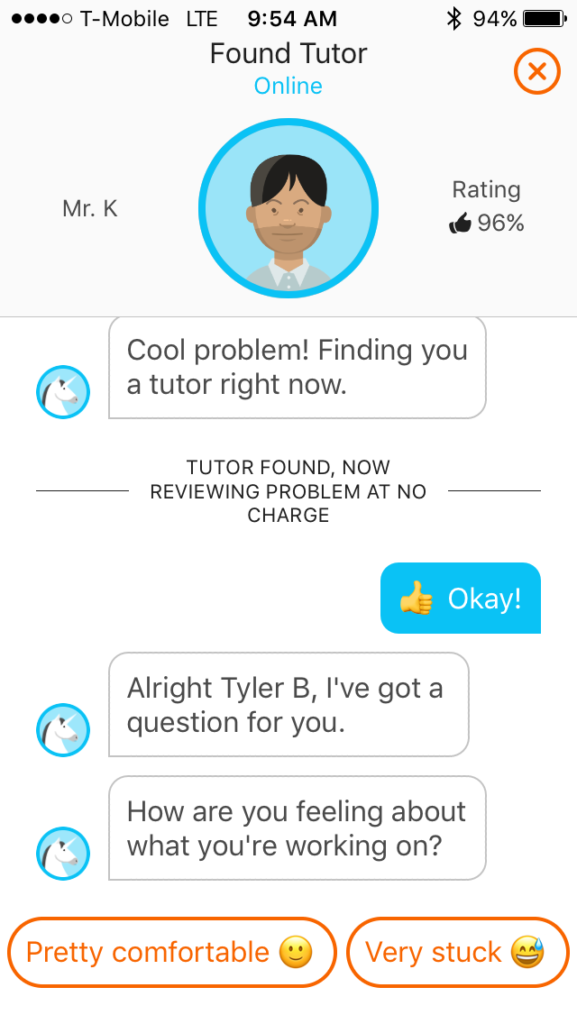UPDATE (9/19): This feature is scheduled to be released sometime on Monday, September 25th.
What Will Change?
Currently, students using our iOS app can chat with our Yup Bot while waiting for a request to be claimed and reviewed.

Students interact with the bot by tapping orange buttons like the two shown above.
Our engineers have finished building a feature that lets you see the responses that students tap. It should be released sometime this coming Wednesday, September 20th, although this date may be pushed back by a day or two Monday, September 25th.
The New Bot Questions
When the feature goes live, there will be a series of five questions that the student can answer. (NOTE: If the student does not have the latest version of the iOS app, then you will see their responses, but not the bot’s questions.)
Here are the questions and the kinds of responses that they can have:
- How well do you want to understand this material?
- Enough to solve this problem
- Enough to solve similar problems
- How do you feel about this material?
- Comfortable
- Not comfortable
- Have you tried anything or gotten started?
- Yes
- No
- Want to snap a photo of work you’ve done on this material?
- Yes [student sends image]
- No
- How many problems do you want to work on?
- One
- More than one
Many students won’t get through all of these questions. The goal is simply to help you adapt your instruction from the very start.
For example, the first question shows the student’s intentions in using the app. If the “Only enough to solve this one” option is chosen, then you should make your explanations even more targeted and relevant to the problem.
What’s Next?
The results from our Review State tests did not show clear advantages in having a 60 second Review State, but this was when no additional facts about the student were provided.
We think the Review State can be made much more effective with the right information. If this turns out to be the case, then a longer Review State may still be a possibility.
Stay tuned for more new features!
–Team Yup

 As many of you know, this year we have seen an influx of probability and statistics problems. As the end of the school year approaches, we’re likely to see a reprisal of these concepts as students prepare for final exams.
As many of you know, this year we have seen an influx of probability and statistics problems. As the end of the school year approaches, we’re likely to see a reprisal of these concepts as students prepare for final exams.